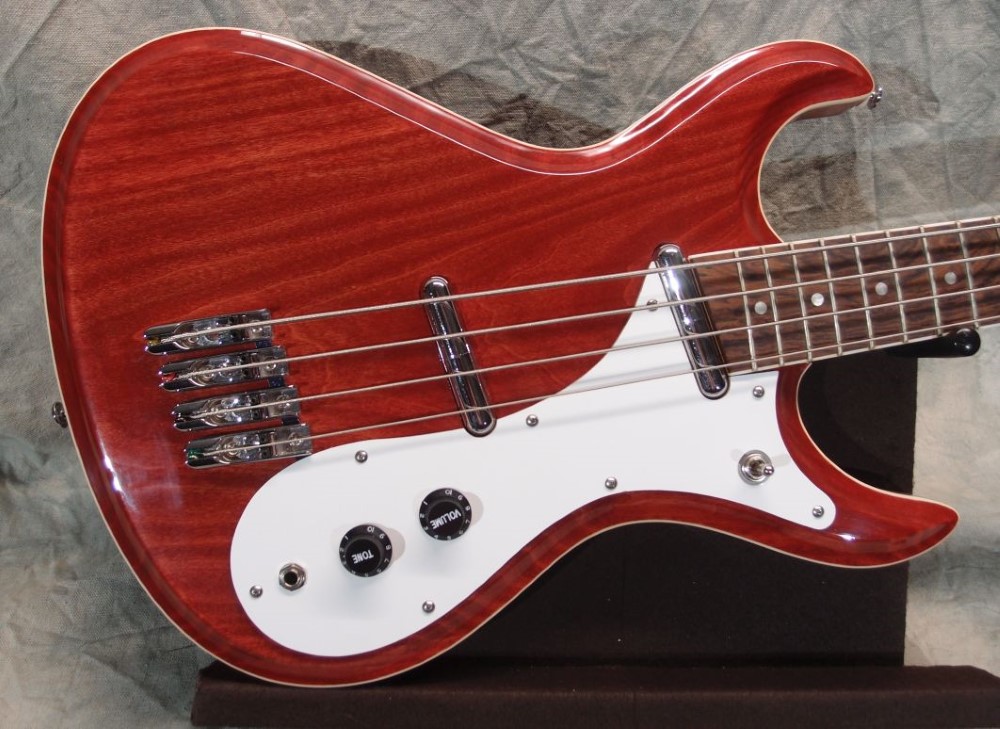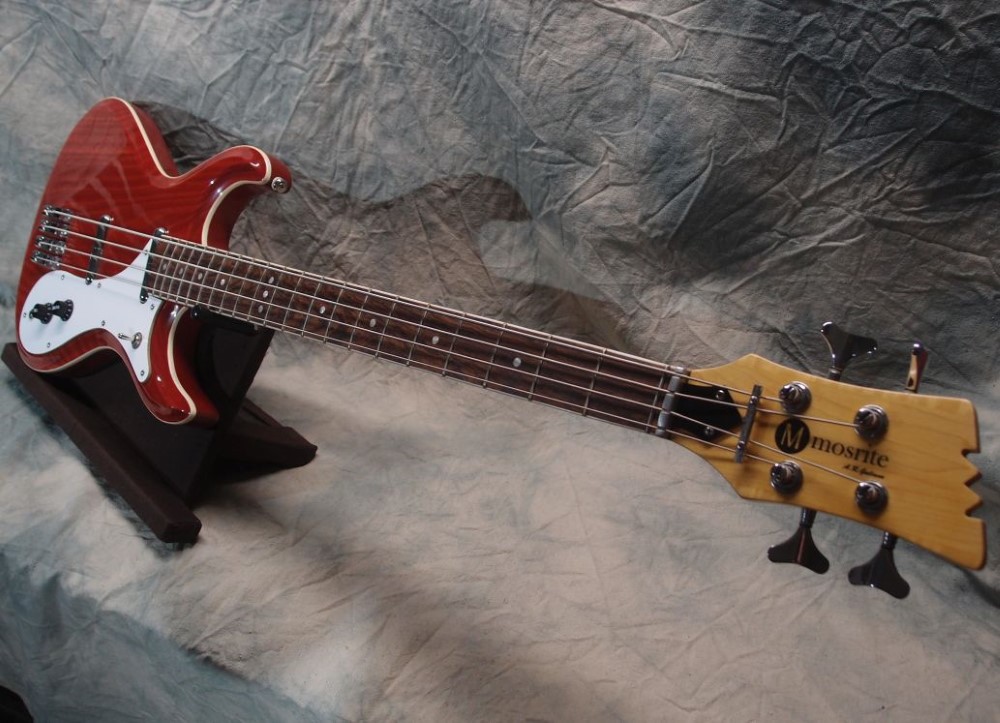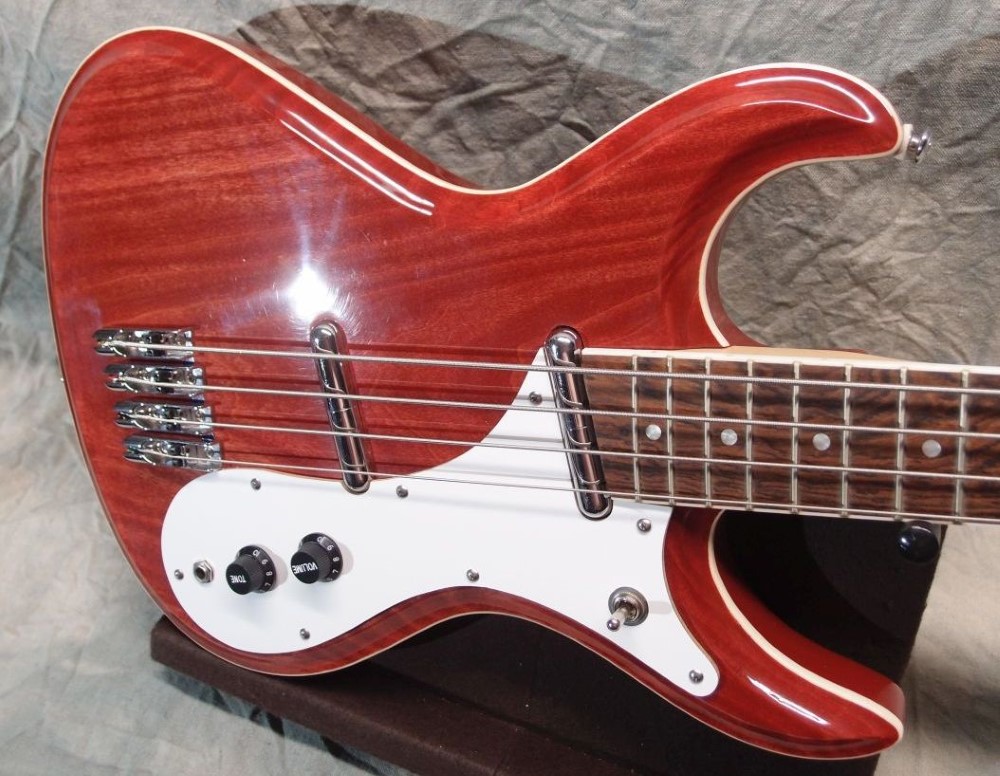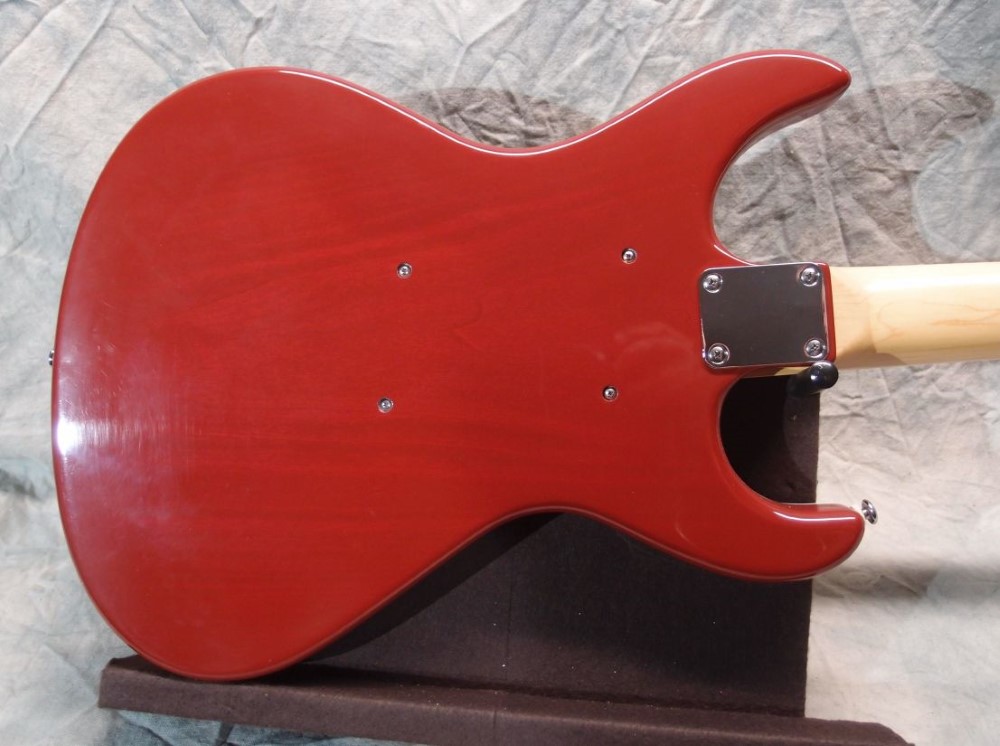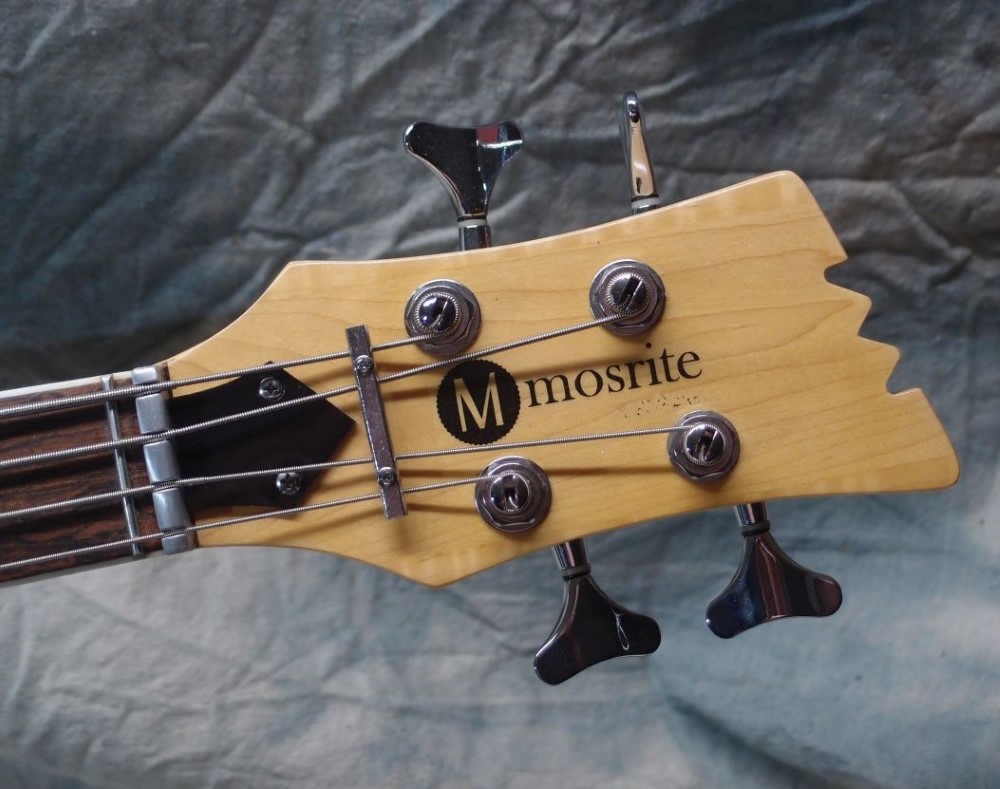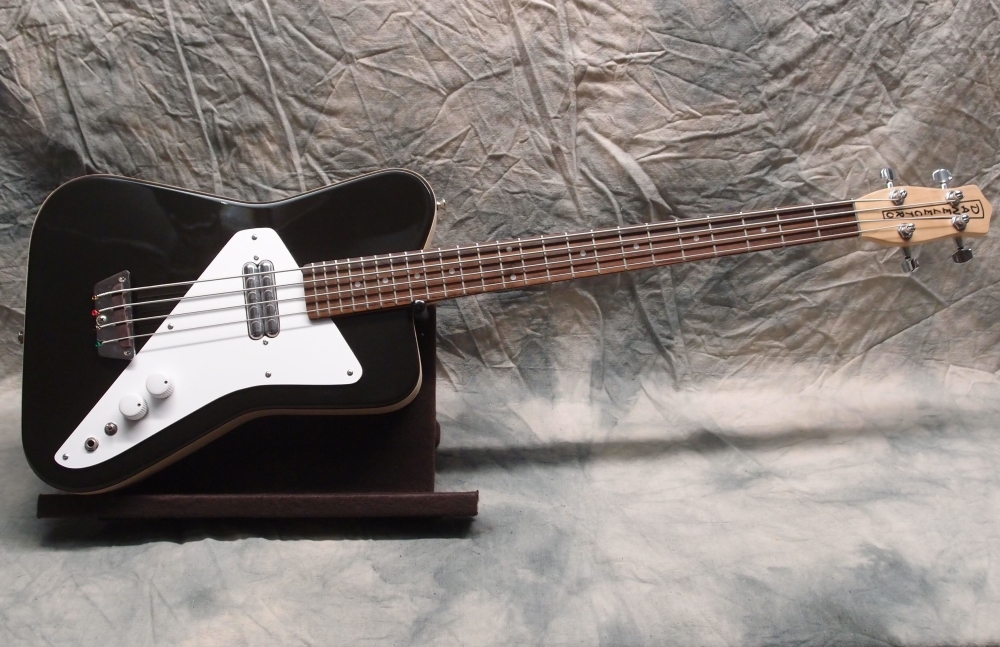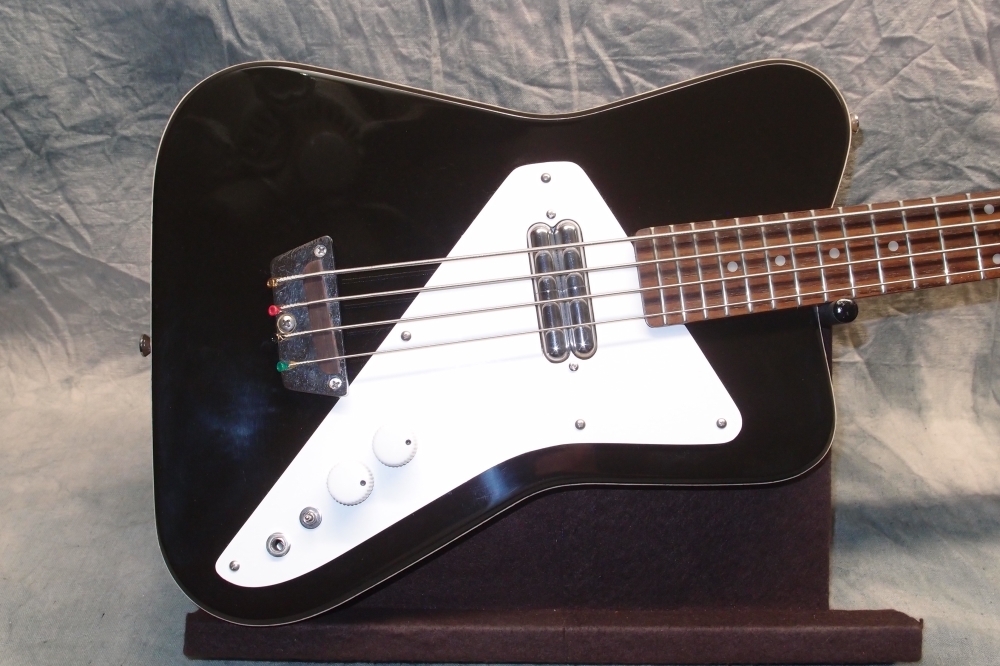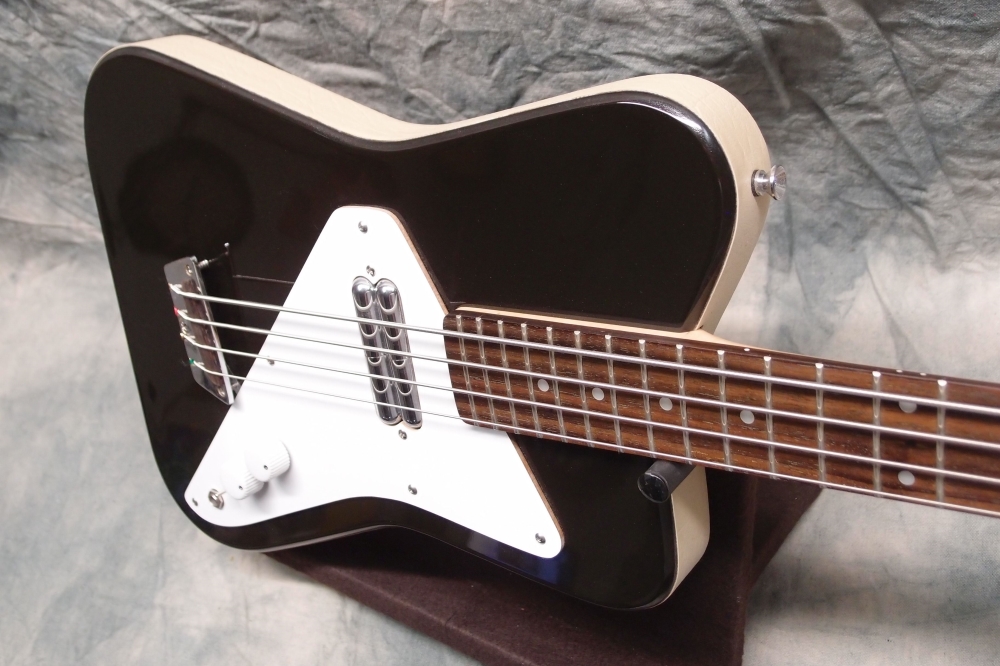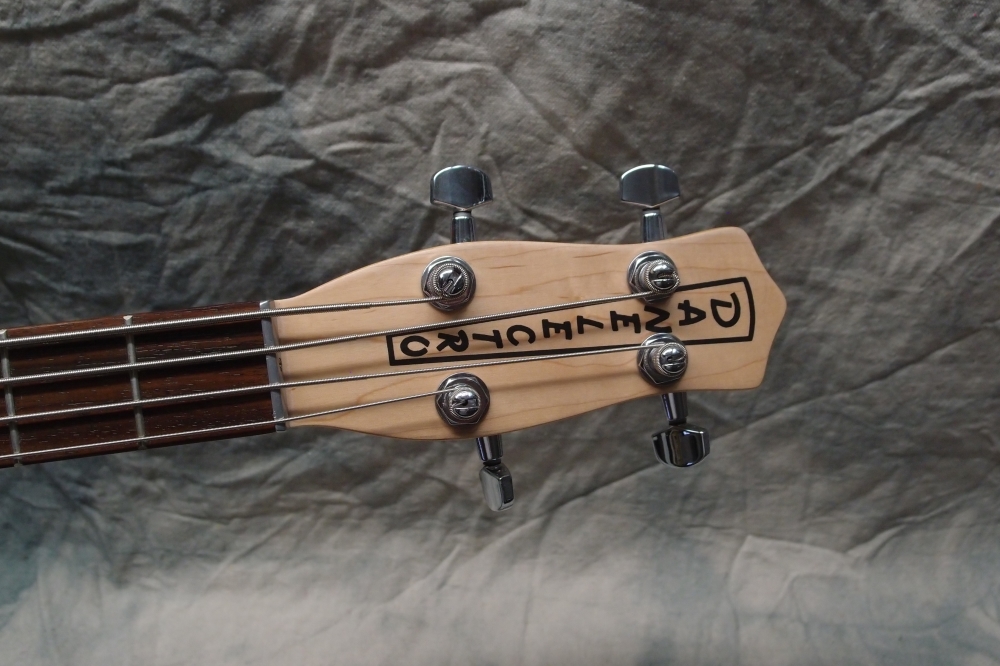July 7, 2019
Took Some Time Off
July 7, 2019
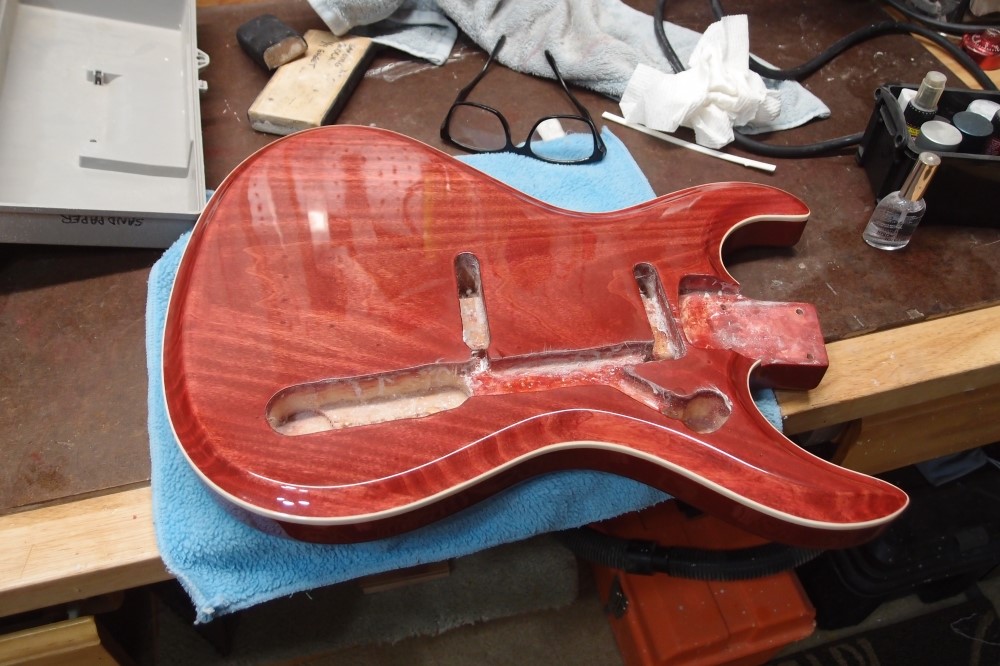
I took some time off from luthering, but yesterday I got the urge again. I took down this body and gave it a polishing with my new buffing rig. On the back I was a little too aggressive sanding out the over-spray in some spots, but the front looks like this.
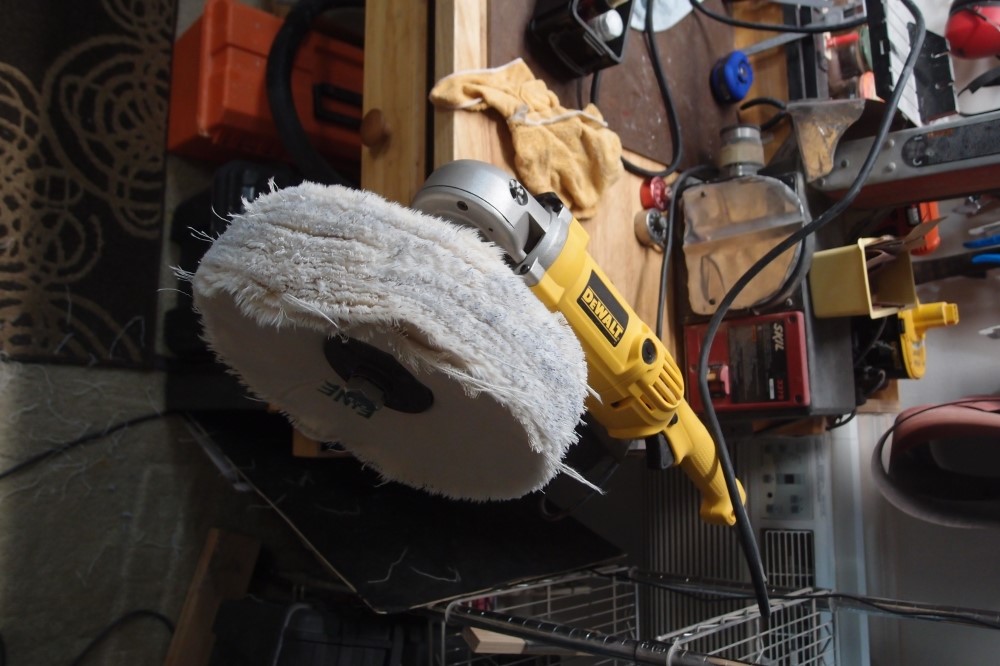
This body has been through hell, so I'm not being too particular. The front has one small divot that I filled with lacquer and will polish out. The back has a few small thin spots in the finish, but nothing through. This is oil-based polyurethane.
The "hell" was my first and last experiment with water-based "polyurethane" ( polyurethane in quotes because water-based really isn't polyurethane, it's more like clear house paint. ) I ended up sanding all of that crap off for a total do-over, including the binding. As a result, the front and back are a little wavy with the grain, but from a few feet away it looks fine. You can read volumes of water-based propaganda online. Don't believe it. Hardly anyone online actually knows what they are talking about, especially the "experts".
The polishing rig works better than I ever hoped. I have two wheels, a coarse starter wheel and a fine finishing wheel, in the picture. They are actually the same, the only difference is the compound. The DeWalt grinder runs slow enough to do the job with very little heating, and it is much faster and cleaner than wet-polishing. Next time I am going to try taking out the over-spray with the coarse wheel rather than sanding it. The best thing about this setup is that it packs away in a toolbox when I'm not using it.





